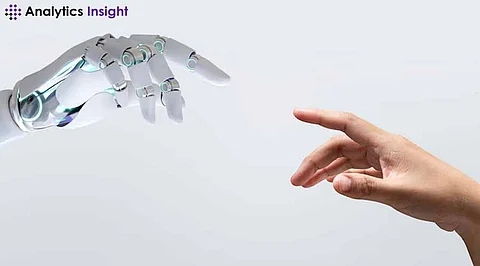

We’re standing at a pivotal juncture in the evolution of artificial intelligence. A point where speed and scale are no longer enough. Today, businesses across the world have access to tools that can write, predict, automate, and optimize—but the real differentiator is no longer just what AI can do. It’s how we use it—and who we build it for.
It’s tempting to chase automation for the sake of efficiency. But in the global services landscape—where relationships matter, where trust is currency, and where value is built one conversation at a time—there’s one truth that keeps surfacing: AI will not replace humans; it will augment them. And the best outcomes will emerge when we design with people at the center.
Let’s be honest—there are things humans are simply not designed to do at scale. Monitoring millions of data points in real-time, securing sensitive information across digital platforms, or identifying threat patterns in a sea of logs—this is where AI thrives. AI can spot an anomaly in nanoseconds. It can flag a data breach, predict customer churn, or optimize a delivery route with zero emotional fatigue. These are powerful capabilities, and we need them.
But then there’s the other half. The nuance. The "why" behind the "what." AI can tell you that a customer is disengaged, but it takes a human to understand why—maybe it was a poorly timed follow-up, maybe a cultural mismatch in communication, or maybe just a missed tone in an email. That’s where our uniquely human capabilities come into play—empathy, creativity, judgment, and trust-building.
In high-touch industries like consulting, health, legal, or education—machines can’t fully replicate the human connection. They can support it. Enhance it. But not replace it.
People in today’s workforce don’t just want high-paying jobs—they want meaningful ones. And AI, when deployed with intention, can be an enabler here. Repetitive tasks? Automated. Mundane reporting? Delegated. Endless follow-ups? Outsourced to a smart bot. What’s left? The space to think, innovate, and collaborate.
But this only works if companies are deliberate. It’s not enough to just install AI. We must design systems that put people first—where technology adapts to human workflows, not the other way around.
The companies that are getting it right aren’t the ones chasing shiny dashboards—they’re the ones asking: “What problem does this solve for my team? For my clients?”
Take learning platforms. Sure, AI can personalize content delivery, but the best ones also understand when to pause and when to escalate to a human coach. Or look at customer support: chatbots can handle routine queries, but handoffs to empathetic human agents ensure resolution, not just response.
This is where I believe the next generation of “Service as a Software” models will shine—not as standalone AI tools but as integrated solutions where humans and machines co-create the experience.
One area where AI has enormous potential—but also real responsibility—is data and information security. As businesses digitize faster than ever, the risk surface has expanded. AI helps us stay ahead—detecting fraud in real time, protecting sensitive user data, ensuring compliance across geographies.
But trust isn’t just about encryption protocols—it’s about transparency. It’s about letting users know how their data is used. About having human oversight in sensitive decisions. Security isn’t only a technical problem. It’s an ethical one. And that’s where human values must guide the code.
In the end, the real winners in the global services space won’t be those with the most advanced algorithms—but those with the most human ones. The firms that blend AI with purpose. That elevate human work rather than erase it. That builds trust, not just transactions.
Because clients don’t remember automation—they remember how you made them feel. Your team members don’t stay for dashboards—they stay for culture. And no more are we investing in AI or technology—people are investing in people who build AI or technology with vision.
Let’s not ask whether AI will replace us. Let’s ask how AI will enable us. The future, as rightly said, isn’t human versus machine—it’s human with machine. And those who learn to dance in that balance will lead the next chapter of global services. Innovate with AI.
